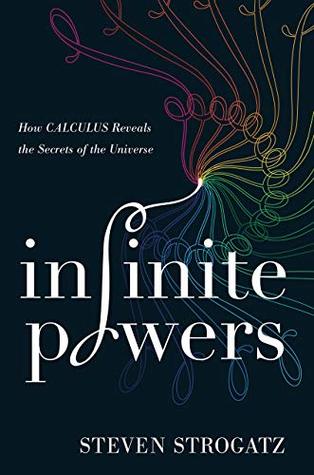More on this book
Community
Kindle Notes & Highlights
our universe obeys laws of nature that always turn out to be expressible in the language of calculus as sentences called differential equations.
Mathematically, circles embody change without change. A point moving around the circumference of a circle changes direction without ever changing its distance from a center.
the idea of using infinity to solve difficult geometry problems has to rank as one of the best ideas anyone ever had.
certain number of dots on a circle, space them evenly, and connect them to one another with straight lines. With three dots, we get an equilateral triangle; with four, a square; with five, a pentagon; and so on, running through a sequence of rectilinear shapes called regular polygons.
Evidently, multiplying zero by infinity can give us any and every conceivable result—6 or 3 or 49.57 or 2,000,000,000. That’s horrifying, mathematically speaking.
Anything that’s continuous can be sliced exactly (not just approximately) into infinitely many infinitesimal pieces. That’s the Infinity Principle.
At the atomic scale, things can happen that would never occur in the macroscopic world.
3 + 10 / 71 < π < 3 + 10 / 70.
3.1415926535897932384626433832795028841971693993751058209749 . . .
the book of nature is written in the language of mathematics.
GPS converts very precise measurements of time into very precise measurements of distance and thereby into very precise measurements of location and motion.
the five Platonic solids: the cube, tetrahedron, octahedron, icosahedron, and dodecahedron. Plato had known and Euclid had proved that no other three-dimensional shapes could be built from identical regular polygons.
A circle is defined as a set of points whose distance from a given point (its center) is constant. Likewise, an ellipse is a set of points whose combined distance from two given points (its foci) is constant.
for every planet, the sun was located at one of the foci of the planet’s elliptical orbit.
Kepler’s second law, it says that an imaginary line drawn from a planet to the sun sweeps out equal areas in equal intervals of time
the second law says that the planets do not move at a constant speed. Instead, the closer they get to the sun, the faster they move.
the square of the period of revolution of a planet is proportional to the cube of its average distance from the sun.
the number T2/a3 is the same for all the planets. Here, T measures how long it takes a planet to go around the sun once (a year for the Earth, 1.9 years for Mars, 11.9 years for Jupiter, and so on), while a measures how far away the planet is from the sun.
Differential calculus cuts complicated problems into infinitely many simpler pieces. Integral calculus puts the pieces back together again to solve the original problem.
differential calculus grew out of algebra,
any linear equation (meaning an equation in which x and y appear to the first power only) produced a straight line on the xy plane.
quadratic equations. These are equations in which, along with the usual constants (like 200) and linear terms (like x and y), the variables can also get squared or multiplied together, creating quadratic terms like x2, y2, and xy. (In Latin, quadratus means “square.”) Squared quantities had traditionally been interpreted as the areas of square regions. Thus, x2 meant the area of an x-by-x square.
The processes of algebra could be soothingly repetitive, like the pleasures of knitting.
René Descartes (1596–1650) was one of the most ambitious thinkers of all time.
He viewed the living body as a system of mechanical devices and located the seat of the soul in the brain’s pineal gland.


